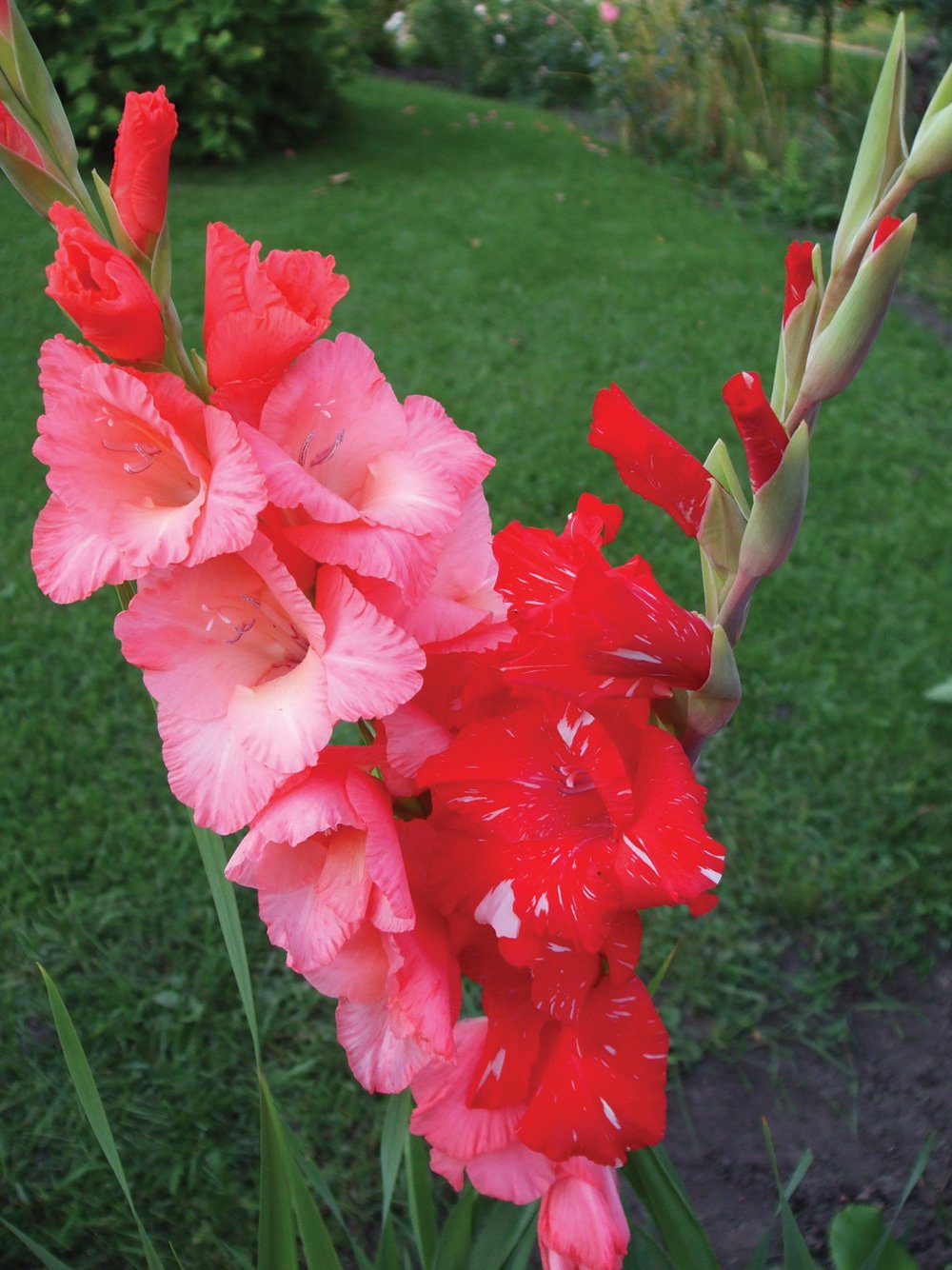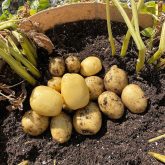Hi again good people. I’m so glad to have you tagging along with me during my continuing journey of words in Grainews. Always have lots to write about. I think back to memories and experiences stored in my memory bank with continued thanks to readers for your emails and phone calls.
Wireworms in garden soil — a pre-treatment for gladiolus corms before planting — and how we can help a bee with a spoonful of sugar. Each of these gets some attention coming up.
Well wouldn’t you know — Mother’s Day has come and gone and so to all moms tuned in, here’s one of the shortest poems I can recall that’s dedicated to you:
Read Also

Gentle treatments for pain in the neck
Heading toward year-end, people unknowingly tense up against the cold and busyness, causing neck pain that can often be treated with appropriate support and gentle mobility, athletic therapist Kathlyn Hossack says.
You’re my mother,
I would have no other!
For all you’ve done for me,
Better Mother there could never be.
And say — Father’s Day arrived last month as well on the first day of summer June 20, 2021. What can we say about dear ol’ dad?
I’ve grown up with your values,
And I’m very glad I did;
So here’s to you, dear father,
From your forever grateful kids.
Who are the best and truest friends we can ever have and turn to when times are good or not so good? Our greatest blessings are the woman and man whom we call Mom and Dad. And we say it without hesitation.
Hummingbirds are finding sugar-water stations, Jenny wrens are returning to wren houses and purple martins are choosing their compartments for nesting. They are just a few sights and sounds of early summer. Before I go to an email, let me tip my welcoming hat to all readers tuned in. In my closing tag line I ask for scarecrow pictures.
April 15, 2021 – Hello Ted
I recently hauled in some topsoil to seed a garden and found some wireworms. What are the implications of wireworms in various garden soils?
– Lynn Grant
Grant Ranch
Ted’s reply: Right off the bat let me say that I had the opportunity to have an enjoyable and informative conversation with Lynn Grant in early May.
There are many species of wireworms. The adult form known as click beetles are elongated or flattened and up to an inch or longer, and can be grey, brown or black. Oddly enough, they are so called because they have a tendency to roll over on their backs. In the process of flipping themselves right side up again — which can take several attempts — they make a clicking sound. Overwintered adults (clicking beetles) lay eggs in plant roots during early spring. Larvae hatch in about 10 days and can spend years feeding on roots. They bore into sown seeds of most vegetable crops feeding on roots and will also bore into flower corms such as gladiolus. They feed near soil surface when soil is cool in spring and fall, then move deeper as soil warms in summer and remain deep in late fall to overwinter. Mature larvae pupate in late summer prior to becoming adult beetles. Usually all stages can be found in infested soil from adult, to larvae to pupate form. Controls include the following: Cultivate the soil weekly four or more times during fall to destroy many larvae. Allow chickens and birds to run and scratch up larvae on infested ground as long as possible. Make a hole in buried pieces of raw potato as traps as soon as soil can be worked in spring and mark locations with a stick. Check for larvae attracted to potato pieces every day or two and destroy them. Delay planting seed potatoes, tubers, gladiolus bulbs and corms until soil is very warm.
I’m aware of two predatory and parasitic nematode products for applying on garden soils and lawns. The first is NemaKnights Nematodes granules for sprinkling dry then watering in. It’s available from Early’s Garden Centre in Saskatoon, phone 1-800-667-1159 or go to their website. The other product is called Terranem beneficial parasitic nematodes that’s mixed in water before sprinkling on garden soils and lawns. It’s available from West Coast Seeds, Delta, B.C., phone 1-888-804-8820, or go to their website. As always, it’s important to read directions and apply products as directed.

Gladiolus corms – a pre-planting treatment
Yes — wireworms will also burrow into gladiolus corms and damage their roots, but there’s also another issue. Have you grown gladiolus in past only to find sections of some leaves have been sucked dry or streaked with white areas, or the flowers appear distorted without opening properly, or look as though shredded by a pair of scissors? A very tiny insect known as the thrip fly may be responsible for such damage and can overwinter in stored gladiolus corms. While glads are growing, these minute-winged culprits hide in sheaths and crevices along the glad spikes. A way to fight back is to trip up the thrips and wireworms before planting corms. A gladiolus expert suggests terminating pests by submerging large corms first in a hot water bath at 43.3 C (110 F) — no hotter — for 15 to 20 minutes — no longer. The eyes of large corms are very heat sensitive, so don’t exceed water temperature nor soak time indicated. Small glad corms can remain soaking in water for about a half-hour at a somewhat higher temperature no higher than 51.6 C (125 F). Using a thermometer is essential to maintain proper temperature accuracy. As a bonus, another option is to add two drops of insecticidal soap or one drop or two of Dettol, Lysol or Pine-Sol disinfectant into every four litres of temperature-controlled water. Ideally this pre-planting treatment should be done while corms are still dormant and before any sprouting. Visually inspect and monitor glads very closely for potential pest intrusion while glads are growing. You can also capture thrips by hanging yellow or white sticky cards available at garden centres. Gladiolus plants will withstand any reasonable pressure spray of water, so hose off any thrips and decrease their activity as they thrive in dry, hot conditions. So when’s the best time to plant gladiolus corms outdoors in open soil? Experienced growers say look to lilac bushes. Once leaf buds on lilac bushes have begun to swell and burst open — that’s the cue. It’s time to plant glads.
A spoonful of sugar
We can all do something to preserve this beautiful country and world we live in for future generations. “This time of year bees are often tired and simply don’t have enough energy to return to the hive. As a result they can often be swept away.” So says British zoologist and author David Attenborough who is best known for his work as a television nature documentary presenter and host. “In the last five years, the bee population has dropped by one-third.” Here’s what he suggests. “If you find a tired bee in your yard, a simple solution of sugar and water will help revive an exhausted bee.” His method is to “simply mix two tablespoons of white, granulated sugar with one tablespoon of water and place on a spoon (or something similar) for the bee to reach out to. You can also help raise awareness by sharing this suggestion. Water-moistened sugar can be set in the backyard on the grass, on soil surface or on top of something higher up. Repeat the practice daily or frequently. Let’s spread the word. Also, place potted flowers and herbs on your balcony or deck and direct seed some wildflowers hither and thither in a corner of the front yard, the backyard or wherever a spot is found. Local bees will really love it!
















